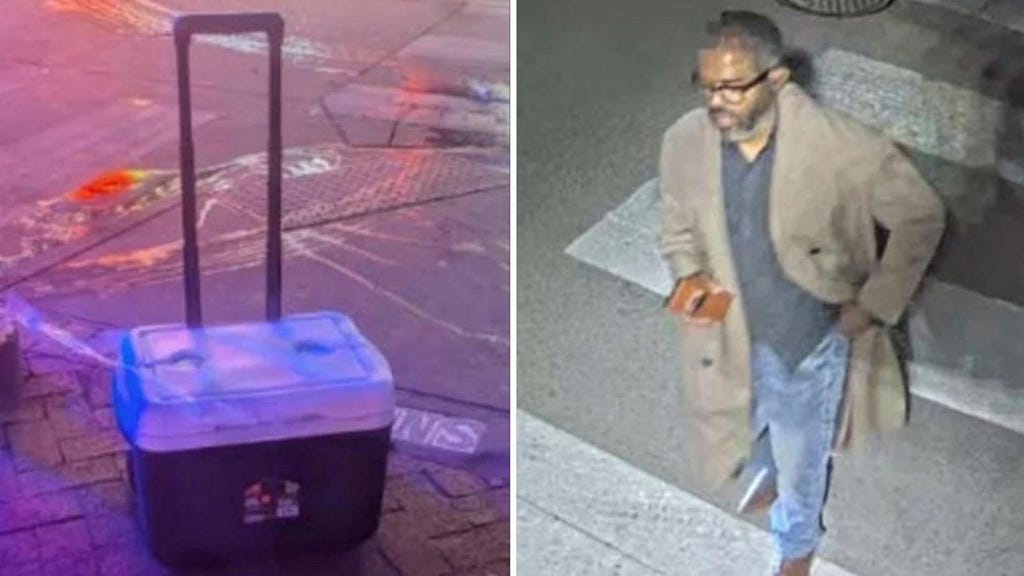The New Orleans New Year’s Day Attack: A Timeline of Terror and Investigation
In the early hours of New Year’s Day, a chilling act of violence shattered the festive atmosphere in New Orleans. At approximately 2:03 AM, surveillance cameras captured Shamsud-Din Jabbar, a 42-year-old man, walking near the iconic Bourbon Street. Just over an hour later, he would unleash a horrific attack, plowing his vehicle into a crowd of New Year’s Eve revelers, leaving a trail of devastation and claiming the lives of 14 innocent people.
In the aftermath of the attack, the Federal Bureau of Investigation (FBI) launched a comprehensive investigation to piece together the events leading up to the tragedy and determine the motive behind Jabbar’s actions. To aid in their investigation and solicit public assistance, the FBI released images of Jabbar taken before the attack. He was seen wearing a light brown coat, a dark shirt, blue jeans, and brown leather shoes. The FBI also released a photo of one of the coolers containing homemade explosives that Jabbar had strategically placed in the vicinity of the attack. This chilling detail underscored the premeditated nature of the assault.
Initially, authorities suspected that Jabbar may have had accomplices. However, on Thursday, they reversed this assessment, stating they no longer believed others were involved in the planning or execution of the attack. Inside Jabbar’s vehicle, investigators discovered an ISIS flag, and Jabbar himself had claimed to have joined the terrorist organization before the summer. However, at the time of reporting, ISIS had not officially claimed responsibility for the attack, leaving lingering questions about the extent of their involvement, if any. This development shifted the focus towards understanding Jabbar’s individual motivations and the potential influence of extremist ideology.
Jabbar’s journey to New Orleans began in Houston, Texas, where he rented the vehicle used in the attack. He then drove to New Orleans on New Year’s Eve, culminating in the devastating act of violence on Bourbon Street. This detail highlighted the deliberate planning and execution of the attack, adding another layer to the investigation.
The attack sent shockwaves throughout the nation and raised concerns about the potential for copycat attacks. As a precautionary measure, the FBI and the Department of Homeland Security issued warnings to law enforcement agencies across the country, alerting them to the possibility of individuals inspired by Jabbar’s actions to carry out similar attacks. This warning was particularly pertinent given ISIS’s history of encouraging vehicle attacks. The agencies highlighted the need for heightened vigilance and emphasized the importance of sharing information to prevent further tragedies.
Despite the heightened security concerns, the FBI emphasized that there was no specific, credible threat to New Orleans in the immediate aftermath of the attack. Christopher Raia, an FBI spokesperson, addressed the public in a press conference, assuring them that while the investigation was ongoing, there was no evidence to suggest an imminent danger to the city. This statement aimed to reassure the public while underscoring the continued efforts to understand the full scope of the attack and prevent future occurrences.
Adding a layer of complexity to the situation, reports emerged that the Department of Homeland Security had issued warnings prior to Christmas regarding the potential for attacks by so-called "lone wolves" during the holiday season. This information, obtained from documents reviewed by CNN, raised questions about the effectiveness of existing security measures and the challenges posed by individuals acting independently. The attack in New Orleans tragically underscored the difficulty in preventing such acts of violence, especially when perpetrated by individuals without direct ties to organized terrorist groups.
In the wake of the tragedy, 16 individuals remained hospitalized, with half of them in intensive care. However, their conditions were reported as stable, offering a glimmer of hope amidst the devastation. Medical professionals expressed cautious optimism that the death toll would not rise further, providing some solace to the grieving community. The focus now shifts to providing support to the victims and their families as they grapple with the physical and emotional scars of this senseless act of violence. The investigation continues as authorities strive to fully understand the motivations behind the attack and implement measures to prevent future tragedies.














